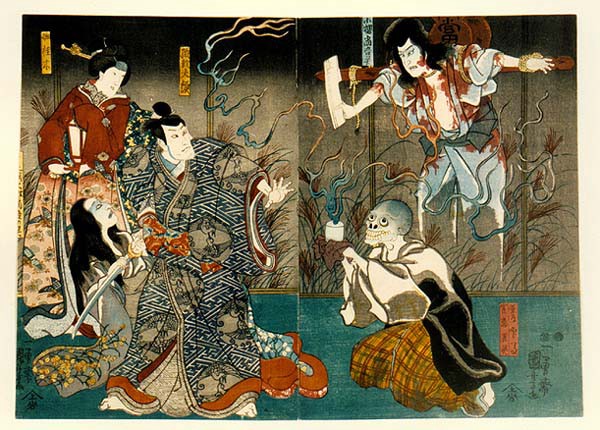Books & Culture
This Is How Magic Works: Welcome to Night Vale by Joseph Fink and Jeffery Cranor

In fiction, magic usually emerges unexpectedly from the ordinary world, or at least from ordinary circumstances. Take, for example, the four average children who found the doorway into a pocket universe which also happened to be a religious allegory; or consider the group of humble scientists who discovered something ancient and weird living beneath the Antarctic; or maybe you remember that time your friend showed you a particular spot in his basement where, from a certain angle, you could see all of space and time compressed into a single point. The list goes on, but, fundamentally, it all functions the same way.
This is how magic works: a writer changes something familiar into something strange and leaves the rest of the world looking pretty much normal. Magic needs contrast, otherwise it wouldn’t be wondrous — it’s that moment when The Wizard of Oz switches into Technicolor.
The rule of thumb with a supernatural element in fiction is that all the other details in the story need to be proportionally normal to highlight the weird. But in Welcome to Night Vale, Joseph Fink and Jeffrey Cranor throw that idea out the window. Everything is weird in Night Vale. There is no contrast between strange and normal because “normal” does not exist in Night Vale. Magic has one rule and they broke it. But for all that, Welcome to Night Vale somehow works. In fact, it’s amazing.
In the town of Night Vale, supernatural events occur in bulk. It’s like being at a Halloween Store for surreal plot devices. Each paragraph could furnish an entire Murakami novel, Kelly Link story, or X-Files episode. In Night Vale, you die and come back to life (but sometimes you don’t); people inexplicably disappear and reappear changed (but sometimes they don’t) — angels exist and they are all named Erika, though no one can acknowledge them legally because a sinister yet vague shadow government looms over everything and is never explained. It isn’t very important to the plot so don’t worry about it — lights hover over the Arby’s, and your house has thoughts, but those thoughts (like the nature of the shadow government) aren’t very important:
While a person sleeps, the house might suddenly have a thought: Taupe is not an emotional catalyst. It’s practical and bland. No one cries at any shade of taupe. Or another thought like OMG time! What is time even?
It’s worth mentioning that this world isn’t entirely new. The town of Night Vale has existed on Fink and Cranor’s podcast of the same title since 2012. According to an NPR interview, the idea was to create a town in the desert “where all conspiracy theories were real.” That makes sense here, but also it doesn’t: There are lots of things in this book that don’t resemble conspiracy theories at all. Some of it is just strange, nonsensical, and funny — plastic pink flamingos that transport you to a different parallel reality, for example.
But it’s alienating, all this weirdness. This is why writers are only supposed to transform one thing at a time — that’s why the rule of contrast is important for surreal fiction. Transform a bunch of things simultaneously, and you risk confusing people. They won’t know where to look for the next trick or what any of it means or why it matters. It’s overwhelming. That’s the big problem with Welcome to Night Vale; there’s too much weirdness to know if any of it really means anything, and while I’m sure an undergraduate English major could make hay deconstructing the post-9/11 American cultural mythos presented here, establishing “meaning,” in the conventional sense, sounds like the opposite of fun, and if there is one thing Welcome to Night Vale wants you to do, it is have fun.
Welcome to Night Vale is all about having a fun. It’s goofy and weird and it doesn’t take itself too seriously — which would be fine; it would be pretty funny, actually, if Fink and Cranor had just embraced that — it works pretty well in the podcast, but, of course, the medium is completely different here. The podcast episodes are twenty minutes long, and this is a 400-page novel, which I guess means that this book supposed to be more than just a fun time.
In what seems like an attempt to simultaneously organize all of this madness and impose some gravitas upon the story, Fink and Cranor created a simple plot, lifted straight from Joseph Campbell. The bones of the story here are familiar — the search for a lost father and the long road to self-discovery — but the plot exists not so much to tell a story as is does to shuffle the reader through the aforementioned parade of weirdoes.
The mechanisms of plot eat up the second half of the novel, which is unfortunate because it means less fun and more clunky explanations about why things are happening and which of those things matter and how those things can be resolved, but the idea of resolution seems counter to the premise of Night Vale in the first place. The characters keep saying that Night Vale is a town that doesn’t make sense, so why should this story make sense? Why does it need to rigidly follow the conventions of a totally uninspired plot? Welcome to Night Vale is at its best when nothing important is happening — like here:
Saturday is a softball game between Night Vale Community Radio and Night Vale Local News TV. I don’t mind telling you, this is not a game I enjoy. The creatures that work in television news, because of the shape and quantity of their appendages, often hold the bat in ways that are unsettling to the human eye.
Welcome to Night Vale is a powerfully imaginative work, and you’d think Fink and Cranor could have invented a more engaging alternative to a conventional story structure. The world presents itself as something new, exciting and fresh — I don’t think it’s unfair to expect the events holding this book together to be equally novel.
But beneath the moments of confusion and the throwaway jokes, beneath the phoned in plot and the general alien-like quality of everything in this book, there is a sincere and compassionate heart beating. The residents of Night Vale love their town; they celebrate its bizarre diversity, and that’s what makes the book great.
What’s magnificent here is the way in which, over the course of the novel, the reader comes to feel a certain kinship with this fictional desert community, proof that even a weirdo-infested town can become welcoming in the right hands. In this way, the book itself is a magic trick in reverse — by the end of the novel, the strange has somehow transformed into the familiar. Welcome to Night Vale presents readers a place where anyone can belong, and that’s the real power of this book. It’s one of those fictional places you miss as soon as you finish the last page. You’ll pine for Night Vale when it is gone. And that’s something else magic does exceptionally well: it leaves you wanting more.

by Joseph Fink and Jeffrey Cranor










